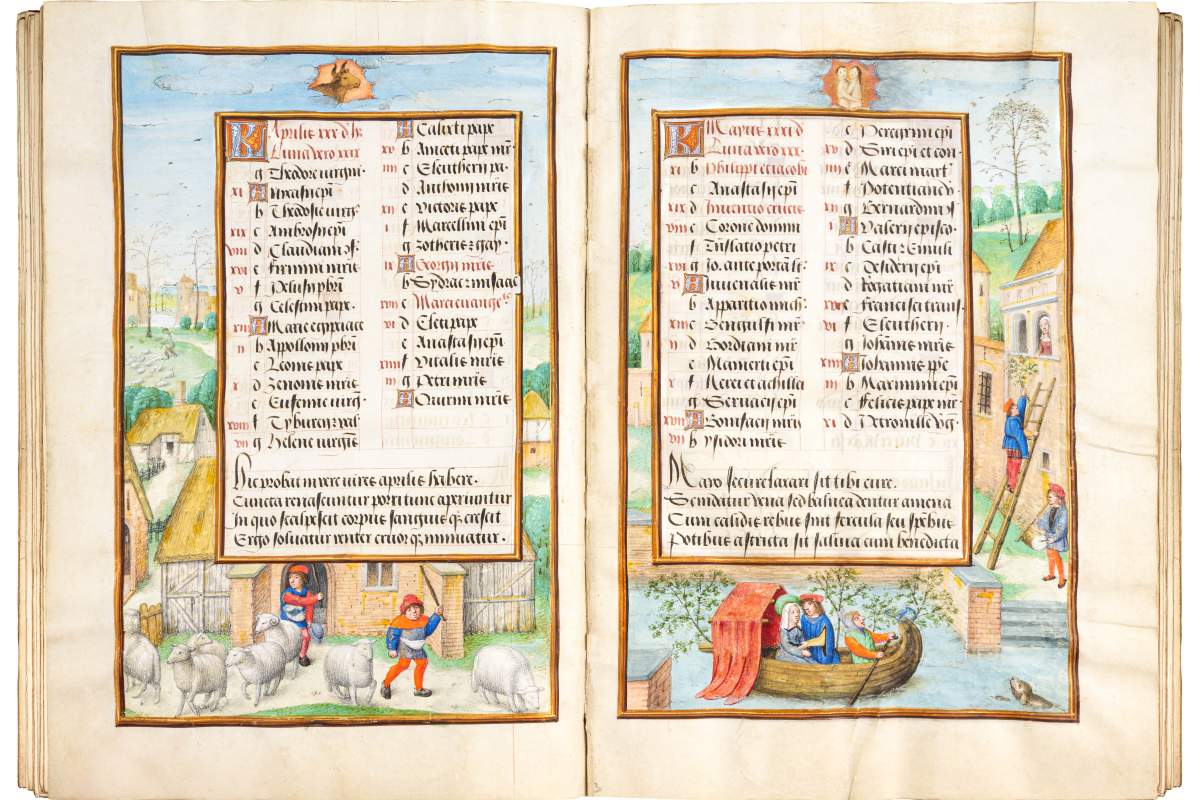
How do you measure time and translate it into images? Already the earliest advanced civilizations introduced the signs of the zodiac for these purposes. And, still in ancient times, Imperial Rome added another circle of images that ran in parallel throughout the year: the Occupations or Labours of the Months. Each of the twelve months was assigned a characteristic activity, mostly agricultural. The Middle Ages combined both pictorial traditions. In early medieval manuscripts, on the portals (Chartres, Paris, Reims, Amiens) and in the rose windows (Lausanne) of Gothic cathedrals, but also, for example, among the reliefs decorating the Fontana Maggiore in Perugia, we find individual figures performing a monthly task with a representative tool, together with the respective sign of the zodiac.
The monthly cycles took on a new quality in the late Middle Ages, again in the medium of book illumination. The isolated figures with a tool were then replaced by scenic depictions that suggested a realistic insight into everyday life and thus became precursors of genre painting. The best-known example of such a cycle are the full-page calendar paintings of the Limbourg brothers’ Très Riches Heures of c. 1410/16. (See our previous blogpost for more info on the calendar pages of the Très Riches Heures)
Genre painting only experienced its heyday somewhat later, from the late 16th to the 19th century. Famous artists such as Pieter Bruegel and Jan Vermeer van Delft were primarily genre painters. The subject matter of genre is ordinary people who remain anonymous and are shown carrying out everyday tasks. As a result, genre paintings allow today's viewers to travel back in time for a field trip, so to speak, which is what makes them so appealing: Like no other art form, they enable us to study the actions and behaviour of average people from earlier periods, their dress, their furnishings, their living conditions and much more, to observe craftsmen from times long past at work or to accompany farmers into the fields long before mechanization. We will see that the calendar illustrations of the Spitzer Hours share precisely these qualities.
Let's take a closer look at them.
The illustration for January combines two canonical themes: the master of the house sitting in the stave chair, stretching his hands and feet towards the open fire to warm himself, and the dinner he is about to enjoy. The table next to him is already set, chopping boards are laid out and small rolls are ready. No cutlery, only knives were used to eat. The maid is serving the roast. The painter subtly links the elements of the architectural setting with each other: the two pillars in the middle of the lower border strip support the two arches above, thus linking exterior and interior views of the imposing city palace. Pigeons perch on its roof and populate the sky, which occupies the upper border strip. It has an important function in all twelve miniatures, as the clouds burst open in the middle and the signs of the zodiac appear as if in a vision against an orange-gold background, here Aquarius.

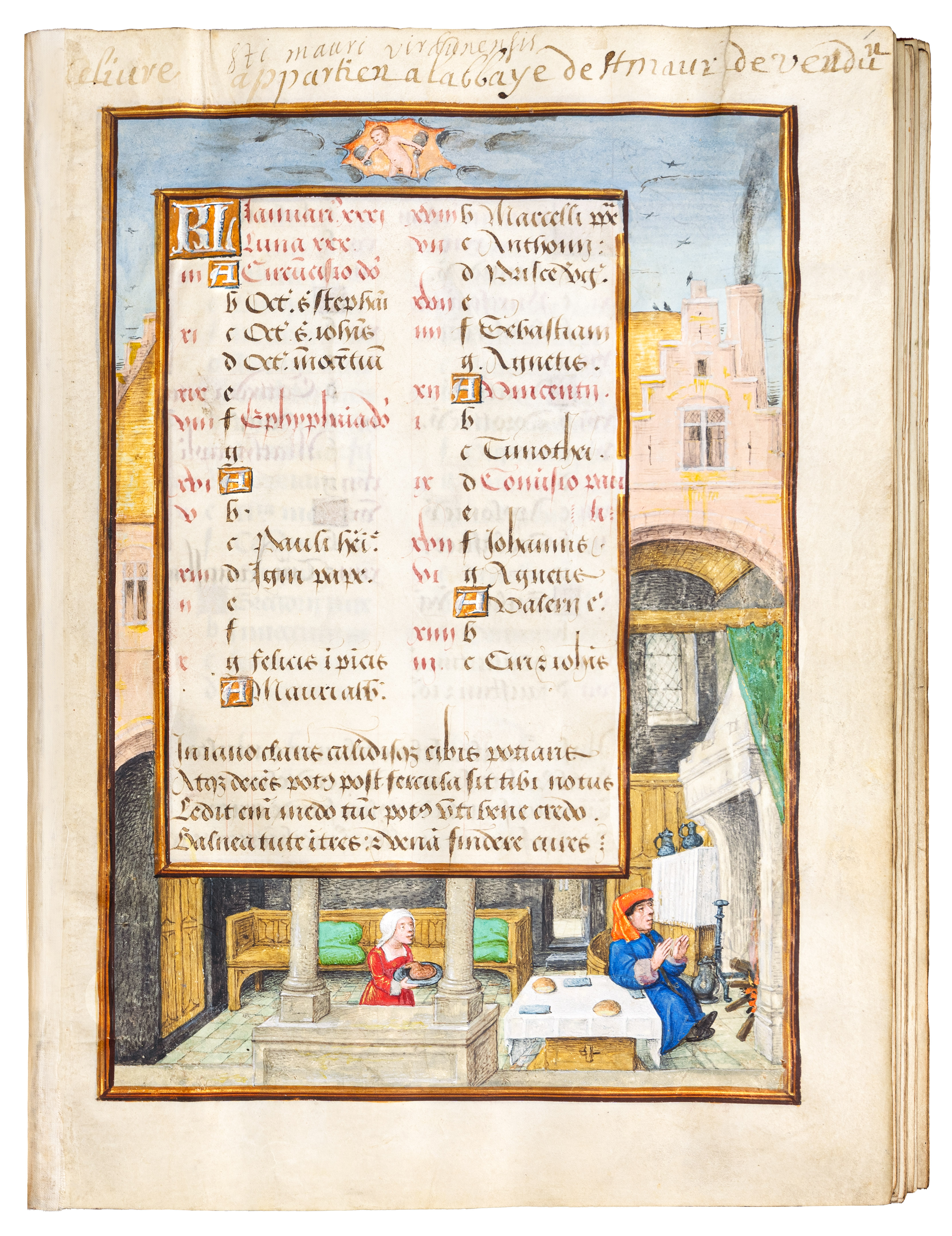
Fig. 1. Calendar page for the month of January
Late medieval calendar cycles already thematize a difference which 17th century genre painting will largely exploit: the class contrast between urban elites and the rural population. The following three depictions are dedicated to the latter’s hard work.
In February, firewood has to be cut – after all, the patrician's fireplace seen in January needs to be fed. To the right, two men are sawing up the trunk of a felled tree with a jigsaw. On the left, the resulting halves are split into manageable logs with the iron wedge and the mallet, the logs are stacked and loaded onto the waiting donkey's carrier. The hard-working men will soon need a break, which they will be able to spend in the rural inn on the left, equipped with a tavern sign, a wine barrel, and a water-filled trough for the draft animals.
In March, reforestation must begin. Stable dung or fresh soil is carted in and piled up, and trees are pruned –here, unusually, without a hatchet. The removed branches are used to mend the wattle fences appearing in the left middle ground.
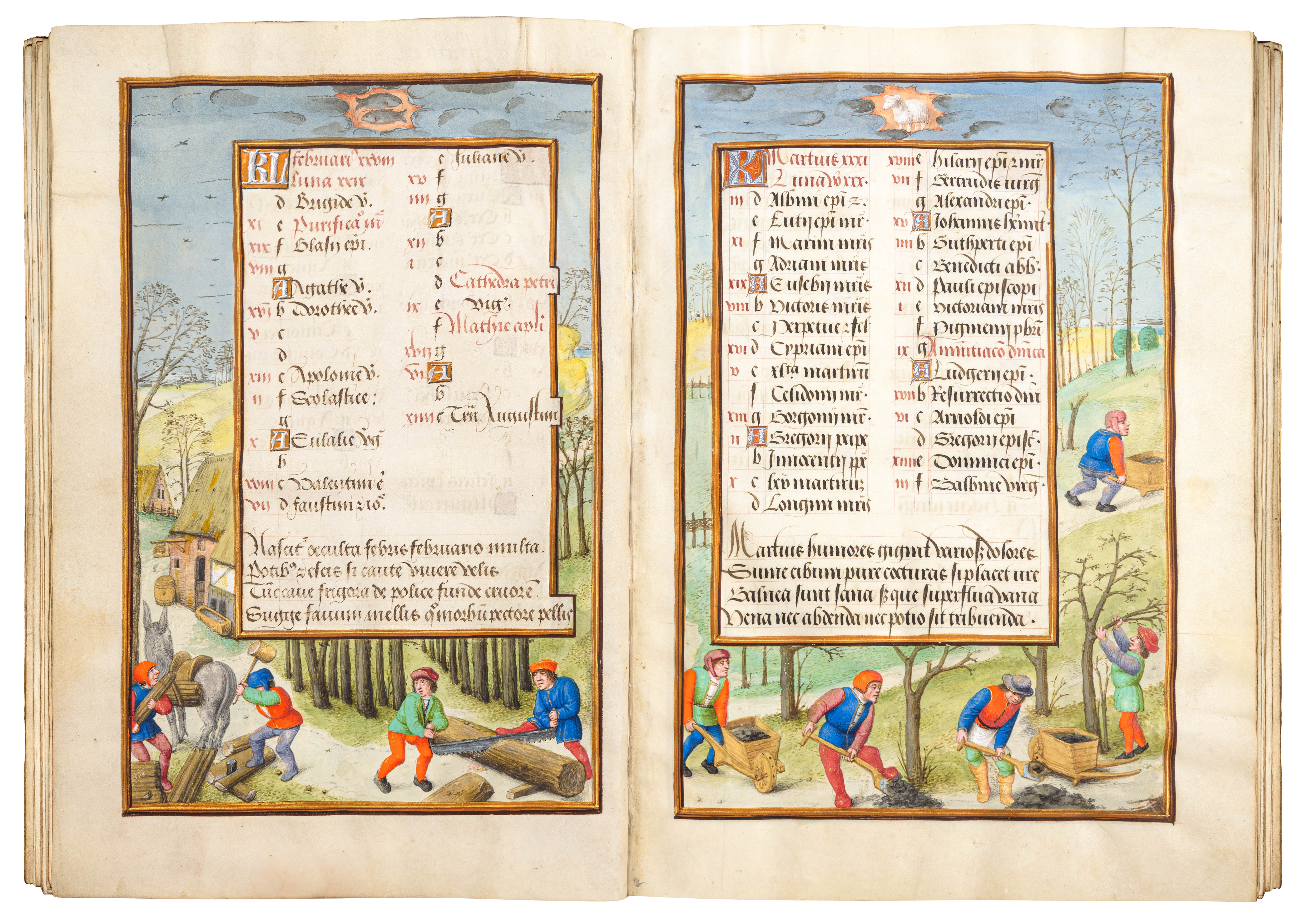
Fig. 2-3. Calendar pages for the months of February and March
April brings an event that is, to the present day, often celebrated in the countryside: the return to pasture of the farm animals, here the sheep, who are leaving the thatched barn for the summer months. The unusual frontal view of the unfolding scene enhances its dynamic and lively character, as the animals are flocking straight towards the viewer.
In contrast, the pleasant weather and blossoming nature of spring and early summer provide the perfect backdrop for the leisurely life of the upper class. May has always been considered the month of bliss, and love the highest of delights. On a gracht (canal) with walled banks on either side, so typical of Flemish towns, a pair of lovers have embarked on a barge richly decorated with May branches. The young man embraces the lady in front of a canopy, under which they could retire. To the right, a young man is climbing a ladder to offer his beloved a sprig of May, accompanied by the drum and flute of a musician.

Fig. 4-5. Calendar pages for the months of April and May
Another pastime is hunting, here enjoyed in June: Originally a privilege of the nobility, it became increasingly usurped by the bourgeoisie towards the end of the Middle Ages. Here, the falconers are modestly dressed, as they whirl a sickle-shaped bellows for the bird still sitting on the gloved hand or carry a falcon to have him hunt the hare fleeing inwards to the right.
After these two upper class interludes, it is high time to mow the grass in July. This is done by three cutters swinging scythes. Whetstones - not the usual sharpening wood with sandpaper - are attached to the upper end of each snaith, with which the blade can be sharpened as required. To quench their thirst, the men have a water jug at their disposal bottom right, and from the background a maid is approaching with a basket full of picnic food.
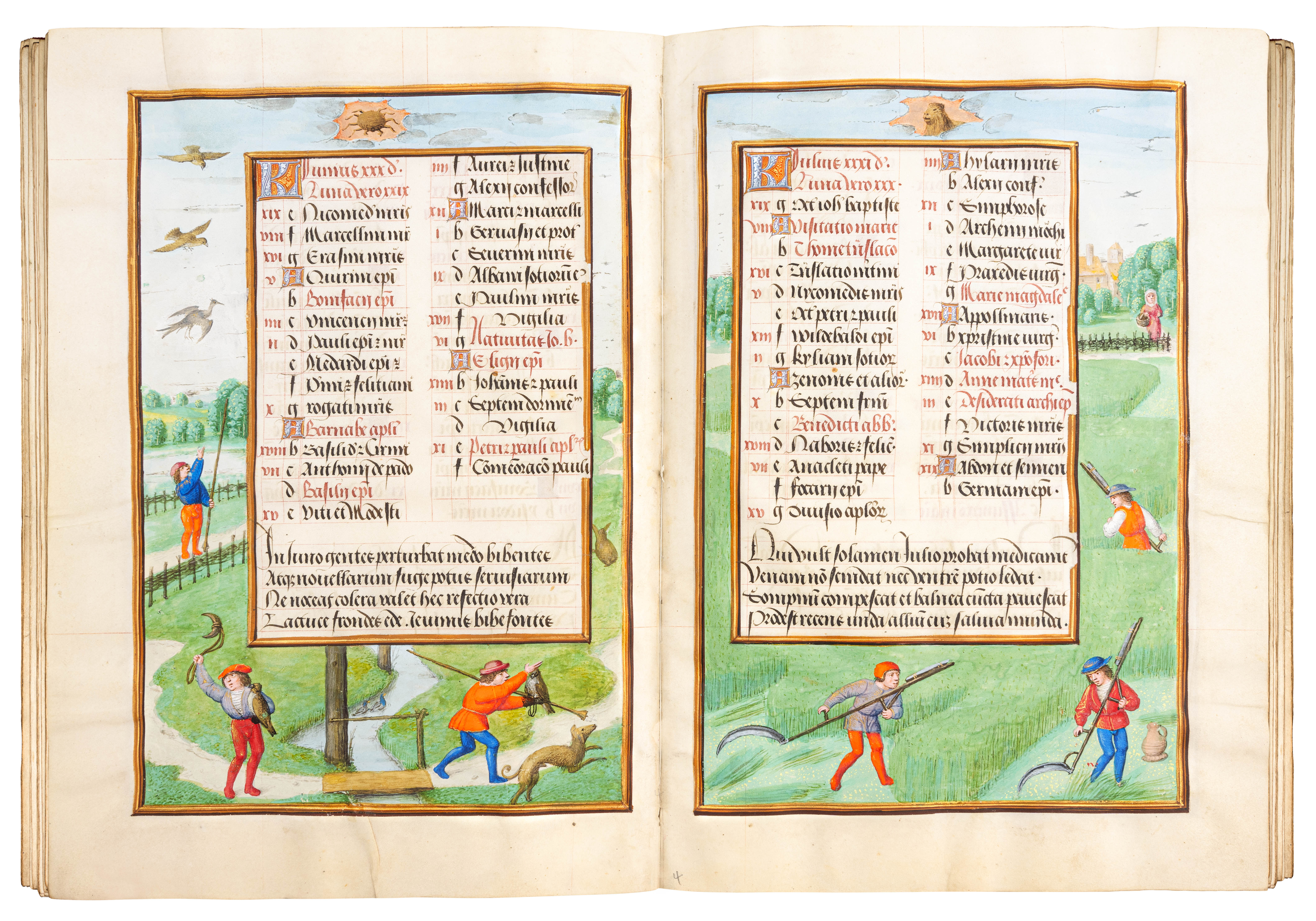
Fig. 6-7. Calendar pages for the months of June and July
Haymaking is followed by grain harvest in August, here not carried out with a sickle, as in most depictions, but with a more efficient combination of two hand tools, the knee scythe (Kniesense) and the reaping hook (Mahdhaken). The long-handled hook is first used to gather the standing grain into a tuft that can be cut with the scythe. Despite its name, the knee scythe is guided by hand; it is named after a knee-like angular extension of its handle that ends in a half-shell. The latter rests on the upper arm like a prosthesis, allowing greater force to be exerted more precisely, which in turn allowed for a longer handle. The farmer can thus cut in an upright position, working with less fatigue and harvesting more straw. Then the cut tuft is pulled aside with the reaping hook, and the workers in the foreground bundle it into sheaves.
The grape harvest in September is not taking place in the vineyard itself, hinted at by the row of vine stakes to the left. Instead, the vines climb up a tall trellis that is attached directly to the front of the house. Grapes are picked and transported in pack baskets. Behind the willow fence, a man in the vat begins to press them with his bare feet.
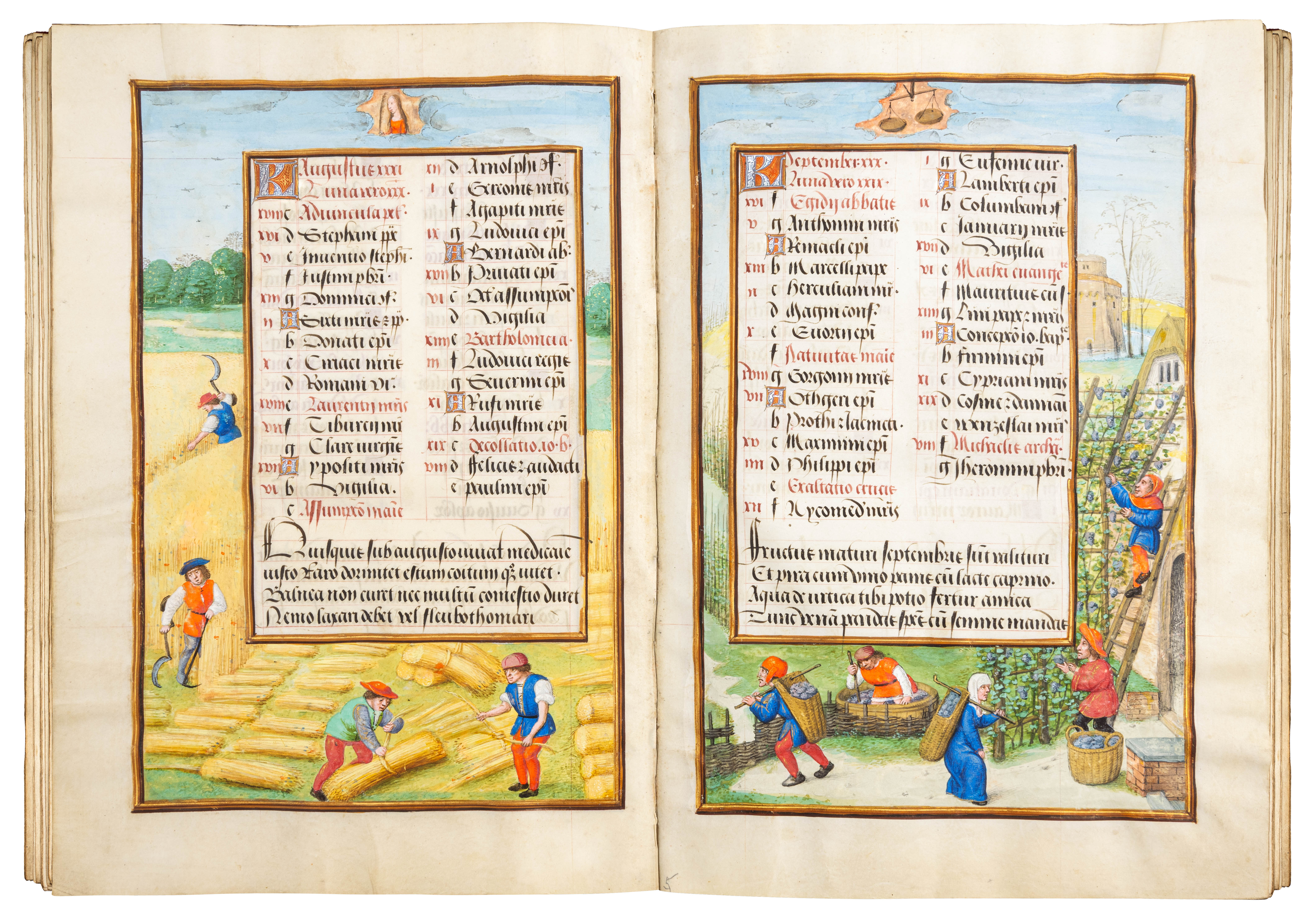
Fig. 8-9. Calendar pages for the months of August and September
In October, a farmer is plowing in the foreground, while behind him a second one spreads the seed from a cloth slung over his shoulder.
The final months of the year are used to stock up on meat. In November, a cow and two wild boars are being driven from the field to the town. The view of the slaughterhouse on the right, in which a gutted pig carcass is stretched out to dry in the air, shows what awaits them there.
Then, in December, a pig is slaughtered on the forecourt of a house. Kneeling on the animal, the butcher stabs his knife into its neck. A woman collects the blood in a jar, equipped with an extra-long handle for her protection. The basket carried by the man on the right also contains meat, as evidenced by the lively interest of the jumping dog. The elegantly designed backdrop is truly remarkable: A town house with a stepped gable, a side passageway to the garden and a bench attached to the street side frames the scene: It is a small architectural piece informed by the same spirit as the famous Street in Delft that Jan Vermeer would paint a century and a half later.
It is in these densely populated borders that we gain insights into the rhythms of life in medieval Europe, allowing us to see and study motifs and aspects of agricultural and urban life that we simply cannot access elsewhere in the art and culture that survives from the Middle Ages. And it is from these elaborate depictions of every-day life, illustrating the lives of the aristocracy -- staying warm in front of the fire, hunting, traveling on pleasure barges – as well as we the lives of the regular people -- working the fields, slaughtering animals and making wine -- that genre painting would emerge over a hundred years later.

Fig. 10-11. Calendar pages for the months of October and November
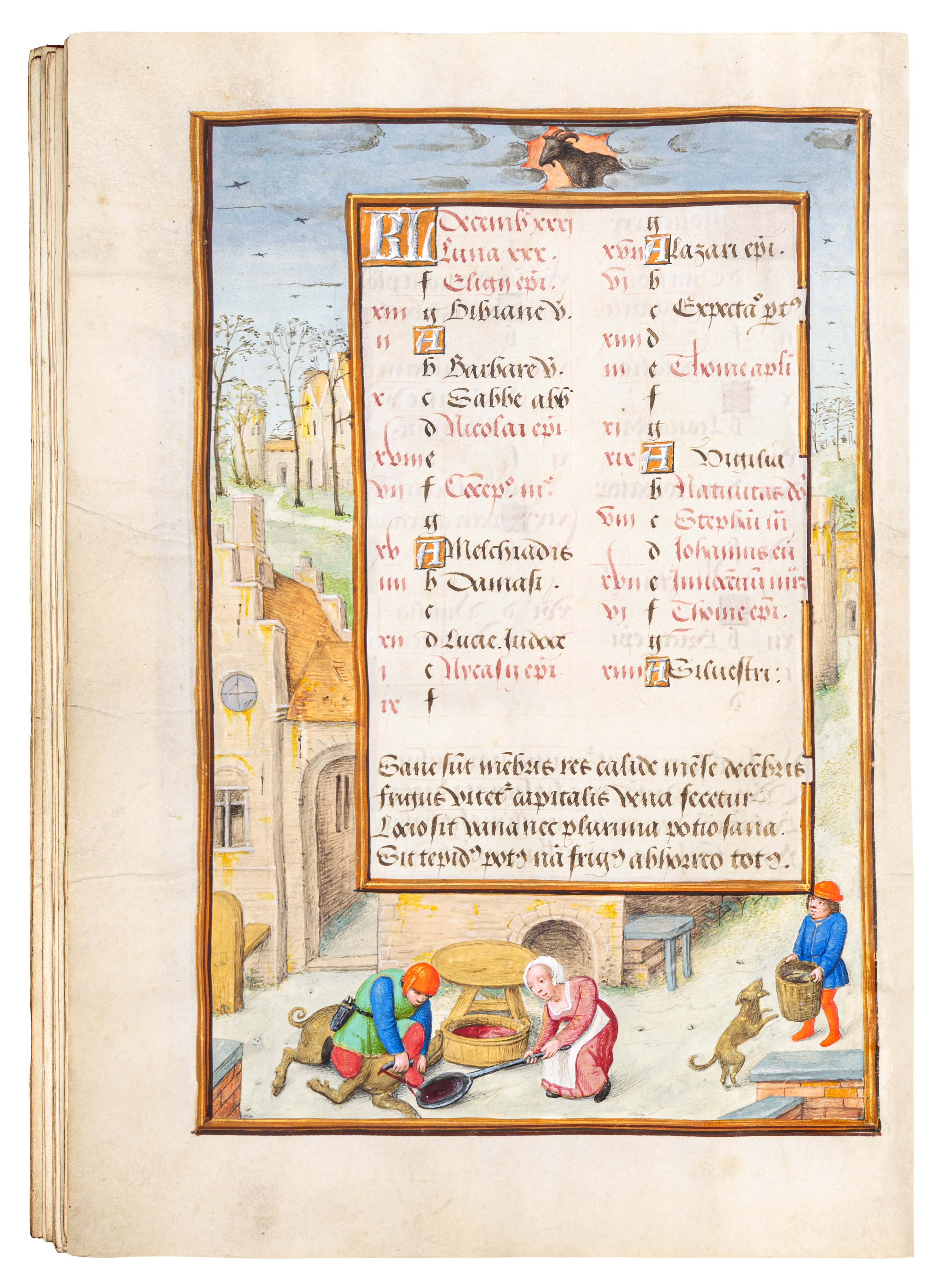
Fig. 12. Calendar page for the month of December


